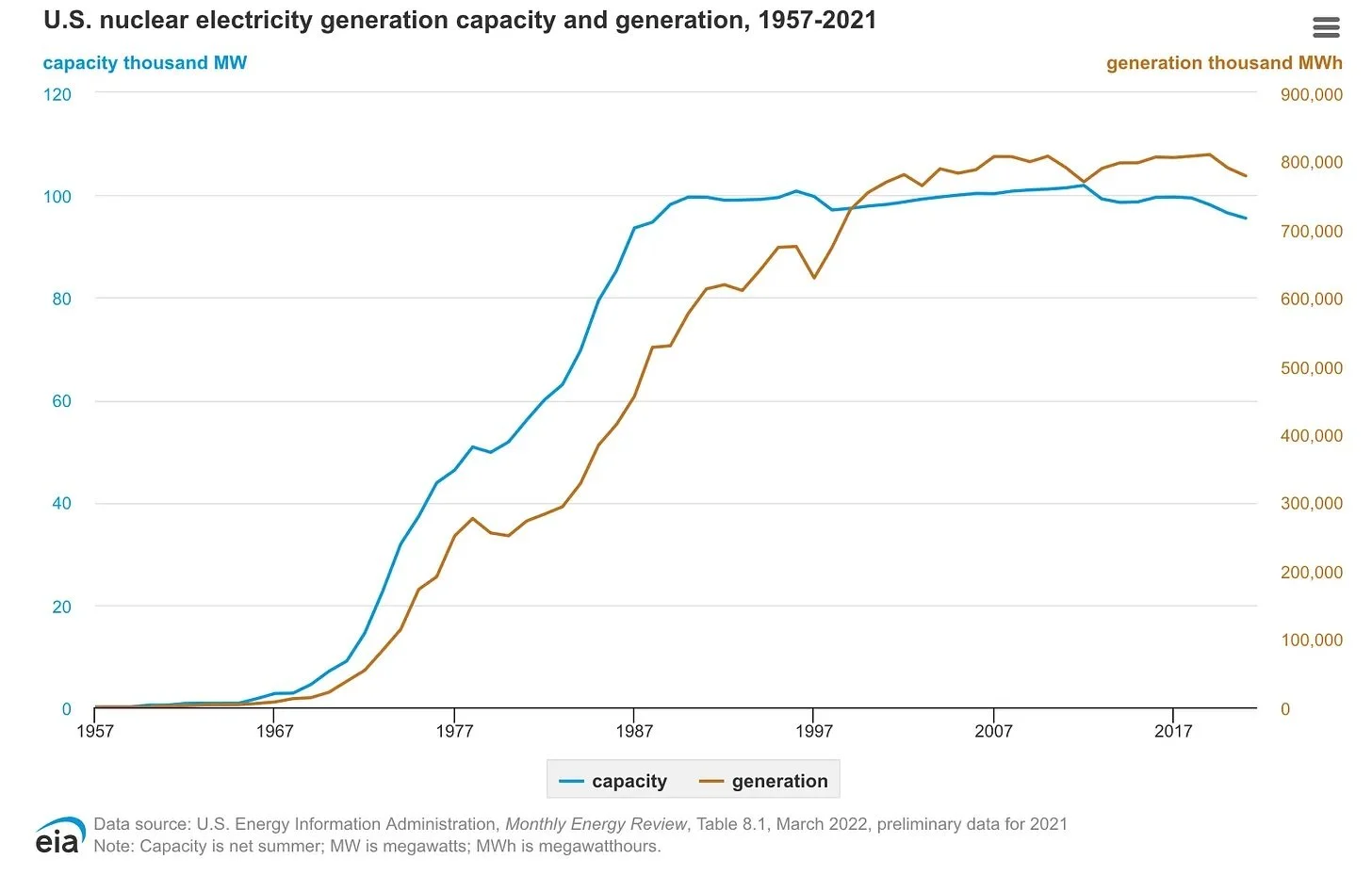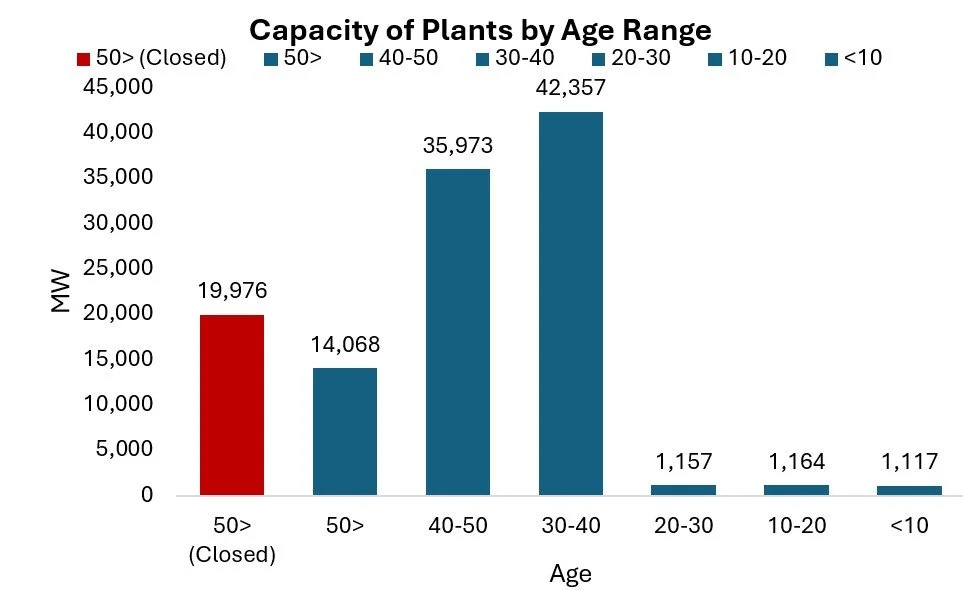United States Nuclear Power Market Overview 2025
Nuclear power contributes 18% of the U.S. electricity and nearly 50% of its carbon-free electricity, supporting grid reliability with a consistent, high-quality baseload supply. In the U.S., there are 94 nuclear power plants, with 28 states hosting at least one commercial nuclear reactor. Many nuclear plant sites, house more than one reactor. Nuclear power plants generally have higher reliability than other means of power generation. One new reactor has recently begun commercial operation, which is Georgia Power's Vogtle Unit 4. It was connected to the grid in March 2024, and began operation around the beginning of May 2024. Vogtle Unit 3 entered commercial service in July 2023.
The U.S. is the world's largest nuclear power producer, accounting for 30% of global generation. Nuclear energy has consistently accounted for 18–20% of total electricity production over the past two decades. Top U.S. power companies, including Constellation, Duke Energy, TVA, Southern Nuclear, and Entergy, collectively operate 54% of the country's nuclear capacity. Nuclear plants have maintained an impressive average capacity factor of 90% since 2000 and are now operating at even higher capacities to meet the demand for clean, reliable energy, particularly coming from industrial sectors and AI-driven data center operations. The nuclear power industry in the U.S. and key foreign markets are expected to experience significant overhauls and upgrades in the coming years, as many plants are at the halfway stage of their operational lifetimes.
Main Nuclear Technologies
The two major technologies used in nuclear power generation are boiling water reactors (BWR) and pressurized water reactors (PWR). The majority of the U.S. market is dominated by PWR technology, accounting for 67 gigawatts, compared to BWR, which accounts for around 34 gigawatts. PWR technology is usually identified with enhanced safety features, higher thermal efficiency, and a lower risk of radioactive contamination. On the other hand, BWR technology is known for its simplicity of design, greater flexibility in reactor operation, and ease of fuel loading.
Nuclear Labor Market
In the U.S., approximately 20,000 out of 57,000 workers are full-time organized-labor employees and they contribute for 20 million hours of maintenance work annually at nuclear power plants. The International Brotherhood of Electrical Workers (IBEW) represents more than 15,000 workers and are present at two-thirds of nuclear power plants in North America. Only 17 reactors are estimated to be non-union-associated which are operated by companies such as Duke, NextEra, and Constellation.
Nuclear Service Providers
The distribution of reactor vendor types in nuclear power plants is primarily divided among Westinghouse, GE, Babcock & Wilcox, and Combustion Engineering. GE technology is utilized in approximately 31 nuclear power plant installations, exclusively in BWRs. Babcock & Wilcox Lowered Loop reactor systems are implemented in five nuclear plants using PWRs. Combustion Engineering technology is present in 10 nuclear plants using PWRs. Westinghouse offers various reactor types on 45 plant installations, ranging from two-loop, three-loop, and four-loop designs.
K&A Marketing Consulting Services to the Nuclear Industry
Krishnan & Associates provides specialized services which are designed to support the nuclear power industry. Our focus is on driving growth, enhancing visibility, and providing critical insights for decision-making. Our expertise includes:
Lead Generation and Thought Leadership: We have been helping nuclear technology providers and service companies in building connections with key industry players, which helps them to become industry leaders in this field.
Content Creation: We have been developing and authoring various content which shows the innovations, trends and advancements in the nuclear technologies.
Market and Competitive Intelligence: We offer in-depth analysis to deliver insights into market trends, technology adoption and competitor strategies.
Market Studies and Forecasting: We assist clients with future planning and offering evaluation of different industry needs including equipment requirements, plant upgrades, and technology advancements.
We have a strong history in partnering with nuclear service providers and equipment manufacturers for whom we have created several solutions to help them in navigating the challenges and opportunities in the nuclear industry.


